INJECTIVE SURJECTIVE AND BIJECTIVE FUNCTIONS
Subscribe to our ▶️ YouTube channel 🔴 for the latest videos, updates, and tips.
In this section, you will learn the following three types of functions.
(i) One to one or Injective function
(ii) Onto or Surjective function
(iii) One to one and onto or Bijective function
One to one or Injective Function
Let f : A ----> B be a function.
The function f is called an one to one, if it takes different elements of A into different elements of B.
That is, we say f is one to one
In other words f is one-one, if no element in B is associated with more than one element in A.
A one-one function is also called an Injective function.
The figure given below represents a one-one function.
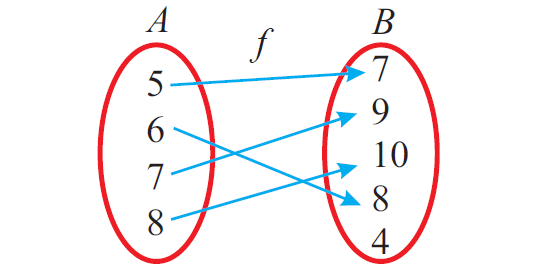
Onto or Surjective Function
Let f : A ----> B be a function.
The function f is called an onto function, if every element in B has a pre-image in A.
That is, in B all the elements will be involved in mapping.
An onto function is also called a surjective function.
The figure given below represents a onto function.
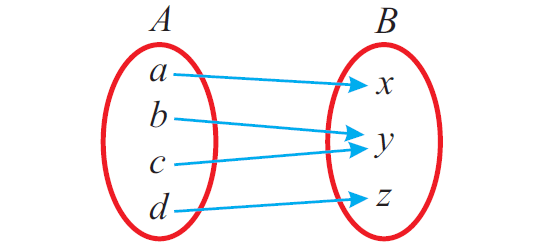
One to One and Onto or Bijective Function
Let f : A ----> B be a function.
The function f is called as one to one and onto or a bijective function, if f is both a one to one and an onto function
More clearly,
f maps distinct elements of A into distinct images in B and every element in B is an image of some element in A.
The figure shown below represents a one to one and onto or bijective function.
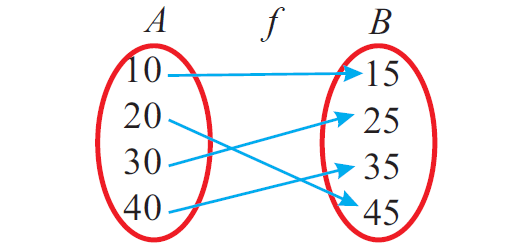
Solved Problems
Problem 1 :
Let f : A ----> B. A, B and f are defined as
A = {1, 2, 3}
B = {5, 6, 7, 8}
f = {(1, 5), (2, 8), (3, 6)}
Verify whether f is a function. if so, what type of function is f ?
Solution :
Write the elements of f (ordered pairs) using arrow diagram as shown below
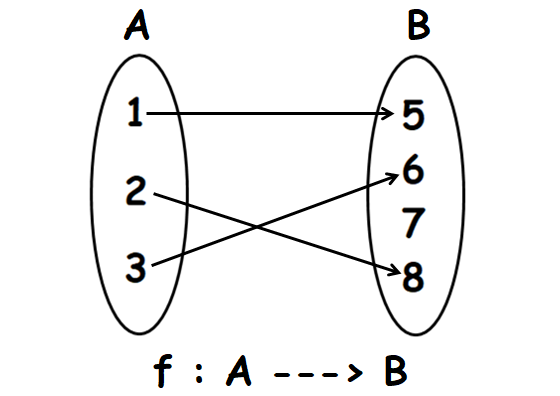
In the above arrow diagram, all the elements of A have images in B and every element of A has a unique image.
That is, no element of A has more than one image.
So, f is a function.
Every element of A has a different image in B.
That is, no two or more elements of A have the same image in B.
Therefore, f is one to one or injective function.
Problem 2 :
Let f : X ----> Y. X, Y and f are defined as
X = {a, b, c, d}
Y = {d, e, f}
f = {(a, e), (b, f), (c, e), (d, d)}
Verify whether f is a function. if so, what type of function is f ?
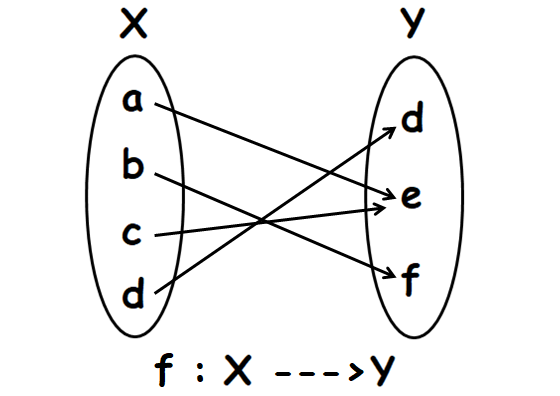
In the above arrow diagram, all the elements of X have images in Y and every element of X has a unique image.
That is, no element of X has more than one image.
So, f is a function.
Every element of Y has a pre-image in X.
Therefore, f is onto or surjective function.
Problem 3 :
Let f : A ----> B. A, B and f are defined as
A = {1, 2, 3, 4}
B = {5, 6, 7, 8}
f = {(1, 8), (2, 6), (3, 5), (4, 7)}
Verify whether f is a function. if so, what type of function is f ?
Solution :
Write the elements of f (ordered pairs) using arrow diagram as shown below.
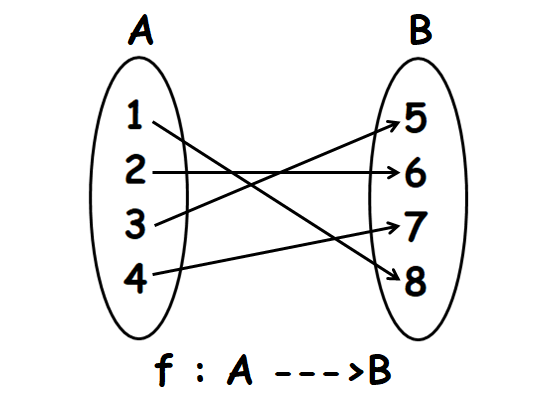
In the above arrow diagram, all the elements of A have images in B and every element of A has a unique image.
That is, no element of A has more than one image.
So, f is a function.
Every element of B has a pre-image in A. So f is onto function.
Every element of A has a different image in B.
That is, no two or more elements of A have the same image in B.
Therefore, f is one to one and onto or bijective function.
Related Topics
Subscribe to our ▶️ YouTube channel 🔴 for the latest videos, updates, and tips.
Kindly mail your feedback to v4formath@gmail.com
We always appreciate your feedback.
About Us | Contact Us | Privacy Policy
©All rights reserved. onlinemath4all.com

Recent Articles
-
10 Hard SAT Math Questions (Part - 44)
Jan 12, 26 06:35 AM
10 Hard SAT Math Questions (Part - 44) -
US Common Core K-12 Curricum Algebra Solving Simple Equations
Jan 07, 26 01:53 PM
US Common Core K-12 Curricum Algebra Solving Simple Equations -
10 Hard SAT Math Questions (Part - 4)
Jan 05, 26 06:56 PM
10 Hard SAT Math Questions (Part - 4)
